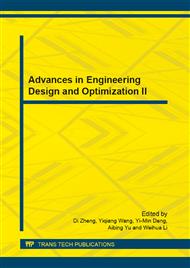p.383
p.387
p.392
p.396
p.400
p.405
p.410
p.414
p.418
The Dynamic Stress Characteristics of Air-Decked Bench Blasting under Soft Interlayer
Abstract:
In modern mining and project construction, how to make use of the explosion energy effectively is the key technology demanding prompt solution at present. The application of air-decked blasting technology has enabled the efficient use of explosion energy, which proves that the air-decked blasting technology can overcome many disadvantages caused by column charge effectively, getting ideal explosion effect. Based on the dynamic finite element analysis software with the material model of Mat-Plastic-Kinemetic, the dynamic stress characteristics and failure mechanism of blast-hole near-field with level soft interlayer are researched with different air-decked charge structures. There is significant effect on the rock at the middle of blast-hole if top-air-decked charge structure with indirect initiation and middle-air-decked charge structure with two ends initiation at the same time. If bottom-air-decked charge structure with indirect initiation, soft inter-layer don’t change the peek of compression and tensile stress curves of typical elements with distance from the bottom of hole, so there is not effect significantly of level soft interlayer on bottom-air-decked charge structure with indirect initiation.
Info:
Periodical:
Pages:
400-404
Citation:
Online since:
September 2011
Authors:
Price:
Сopyright:
© 2012 Trans Tech Publications Ltd. All Rights Reserved
Share:
Citation:


